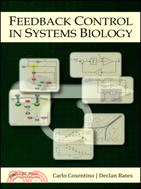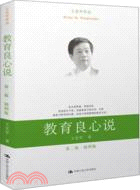Feedback Control in Systems Biology
商品資訊
ISBN13:9781439816905
出版社:CRC Press UK
作者:Carlo Cosentino and Declan Bates
出版日:2011/10/12
裝訂/頁數:精裝/296頁
規格:24.8cm*16.5cm*1.9cm (高/寬/厚)
版次:1
定價
:NT$ 7150 元優惠價
:90 折 6435 元
若需訂購本書,請電洽客服 02-25006600[分機130、131]。
商品簡介
作者簡介
目次
商品簡介
Like engineering systems, biological systems must also operate effectively in the presence of internal and external uncertainty—such as genetic mutations or temperature changes, for example. It is not surprising, then, that evolution has resulted in the widespread use of feedback, and research in systems biology over the past decade has shown that feedback control systems are widely found in biology. As an increasing number of researchers in the life sciences become interested in control-theoretic ideas such as feedback, stability, noise and disturbance attenuation, and robustness, there is a need for a text that explains feedback control as it applies to biological systems.
Written by established researchers in both control engineering and systems biology, Feedback Control in Systems Biology explains how feedback control concepts can be applied to systems biology. Filling the need for a text on control theory for systems biologists, it provides an overview of relevant ideas and methods from control engineering and illustrates their application to the analysis of biological systems with case studies in cellular and molecular biology.
Control Theory for Systems Biologists
The book focuses on the fundamental concepts used to analyze the effects of feedback in biological control systems, rather than the control system design methods that form the core of most control textbooks. In addition, the authors do not assume that readers are familiar with control theory. They focus on "control applications" such as metabolic and gene-regulatory networks rather than aircraft, robots, or engines, and on mathematical models derived from classical reaction kinetics rather than classical mechanics. Another significant feature of the book is that it discusses nonlinear systems, an understanding of which is crucial for systems biologists because of the highly nonlinear nature of biological systems.
The authors cover tools and techniques for the analysis of linear and nonlinear systems; negative and positive feedback; robustness analysis methods; techniques for the reverse-engineering of biological interaction networks; and the analysis of stochastic biological control systems. They also identify new research directions for control theory inspired by the dynamic characteristics of biological systems. A valuable reference for researchers, this text offers a sound starting point for scientists entering this fascinating and rapidly developing field.
Written by established researchers in both control engineering and systems biology, Feedback Control in Systems Biology explains how feedback control concepts can be applied to systems biology. Filling the need for a text on control theory for systems biologists, it provides an overview of relevant ideas and methods from control engineering and illustrates their application to the analysis of biological systems with case studies in cellular and molecular biology.
Control Theory for Systems Biologists
The book focuses on the fundamental concepts used to analyze the effects of feedback in biological control systems, rather than the control system design methods that form the core of most control textbooks. In addition, the authors do not assume that readers are familiar with control theory. They focus on "control applications" such as metabolic and gene-regulatory networks rather than aircraft, robots, or engines, and on mathematical models derived from classical reaction kinetics rather than classical mechanics. Another significant feature of the book is that it discusses nonlinear systems, an understanding of which is crucial for systems biologists because of the highly nonlinear nature of biological systems.
The authors cover tools and techniques for the analysis of linear and nonlinear systems; negative and positive feedback; robustness analysis methods; techniques for the reverse-engineering of biological interaction networks; and the analysis of stochastic biological control systems. They also identify new research directions for control theory inspired by the dynamic characteristics of biological systems. A valuable reference for researchers, this text offers a sound starting point for scientists entering this fascinating and rapidly developing field.
作者簡介
Carlo Cosentino, PhD, is a lecturer in systems and control engineering in the School of Computer and Biomedical Engineering at Magna Græcia University of Catanzaro, Italy, where he has taught courses in the area of control engineering as well as a course on modeling of biological systems. He has authored more than 60 scientific publications in the fields of control engineering and systems biology, which have appeared in peer reviewed journals and international conferences. His current research interests are in the field of systems and control theory, with particular emphasis on its application to the investigation of biological systems at the cellular and molecular levels.
Declan Bates, PhD, is a professor of biological systems engineering in the College of Engineering, Mathematics and Physical Sciences at the University of Exeter, UK. He has authored more than 90 technical publications and is currently Vice-Chair of the Research Grants Review Committee of the International Human Frontier Science Program and a member of the editorial board of IET Systems Biology. His research is focused on the development and application of advanced control system design and analysis methods for aerospace and systems biology applications.
Declan Bates, PhD, is a professor of biological systems engineering in the College of Engineering, Mathematics and Physical Sciences at the University of Exeter, UK. He has authored more than 90 technical publications and is currently Vice-Chair of the Research Grants Review Committee of the International Human Frontier Science Program and a member of the editorial board of IET Systems Biology. His research is focused on the development and application of advanced control system design and analysis methods for aerospace and systems biology applications.
目次
IntroductionWhat is feedback control?Feedback control in biological systemsApplication of control theory to biological systems: a historical perspectiveReferencesLinear systemsIntroduction State-space models Linear time-invariant systems and the frequency response Fourier analysis Transfer functions and the Laplace transform Stability Change of state variables and canonical representations Characterising system dynamics in the time domain Characterising system dynamics in the frequency domain Block diagram representations of interconnected systems Case Study I: Characterising the frequency dependence of osmo–adaptation in Saccharomyces cerevisiaeCase Study II: Characterising the dynamics of the Dictyostelium external signal receptor networkReferencesNonlinear systems Introduction Equilibrium points Linearisation around equilibrium points Stability and regions of attractions Optimisation methods for nonlinear systems Case study III: Stability analysis of tumor dormancy equilibriumCase study IV: Global optimisation of a model of the tryptophan control system against multiple experiment dataReferences Negative feedback systemsIntroductionStability of negative feedback systemsPerformance of negative feedback systemsFundamental tradeoffs with negative feedbackCase Study V: Analysis of stability and oscillations in the p53-Mdm2 feedback system Case Study VI: Perfect adaptation via integral feedback control in bacterial chemotaxis References Positive feedback systemsIntroductionBifurcations, bistability and limit cycles Monotone systems Chemical reaction network theory Case Study VII: Positive feedback leads to multistability, bifurcations and hysteresis in a MAPK cascade Case Study VIII: Coupled positive and negative feedback loops in the yeast galactose pathway References Model validation using robustness analysis Introduction Robustness analysis tools for model validation New robustness analysis tools for biological systems Case Study IX: Validating models of cAMP oscillations in aggregating Dictyostelium cells Case Study X: Validating models of the p53-Mdm2 System References Reverse engineering biomolecular networksIntroductionInferring network interactions using linear modelsLeast squares Exploiting prior knowledge Dealing with measurement noise Exploiting time-varying modelsCase Study XI: Inferring regulatory interactions in the innate immune system from noisy measurements Case Study XII: Reverse engineering a cell cycle regulatory subnetwork of Saccharomyces cerevisiae from experimental microarray data References Stochastic effects in biological control systems Introduction Stochastic modelling and simulation A framework for analysing the effect of stochastic noise on stabilityCase Study XIII: Stochastic effects on the stability of cAMP oscillations in aggregating Dictyostelium cells Case Study XIV: Stochastic effects on the robustness of cAMP oscillations in aggregating Dictyostelium cells References
Index
Index
主題書展
更多
主題書展
更多書展今日66折
您曾經瀏覽過的商品
購物須知
外文書商品之書封,為出版社提供之樣本。實際出貨商品,以出版社所提供之現有版本為主。部份書籍,因出版社供應狀況特殊,匯率將依實際狀況做調整。
無庫存之商品,在您完成訂單程序之後,將以空運的方式為你下單調貨。為了縮短等待的時間,建議您將外文書與其他商品分開下單,以獲得最快的取貨速度,平均調貨時間為1~2個月。
為了保護您的權益,「三民網路書店」提供會員七日商品鑑賞期(收到商品為起始日)。
若要辦理退貨,請在商品鑑賞期內寄回,且商品必須是全新狀態與完整包裝(商品、附件、發票、隨貨贈品等)否則恕不接受退貨。
































